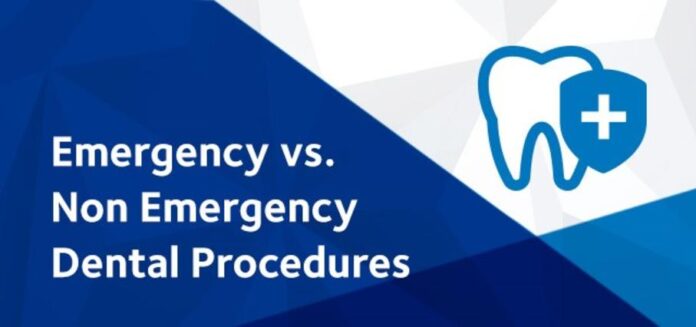One of the many consequences of the coronavirus pandemic involves the limitations imposed on dental work.
The American Dental Association (ADA), realizing that close proximity during office visits between dentists, their team, and patients could risk transmission of the virus, recommended that all dentistry practices close for everything except emergencies through April 30, or even into May or June, depending on the state.
That means postponing routine checkups/exams, elective procedures and non-urgent dental visits. But it also raises questions about what constitutes a dental emergency during the pandemic, and how dentists are viewing this narrower but important focus of their practice.
“We all have so much concern for everyone’s health during this difficult time,” says Dr. Rick Mars (www.dentalcaregroup.net), a general dentist and the author of The Big Smile: The Principles of Modern Dentistry – for Dentists and Patients.
“You never want your patients to put off checkups or procedures that enhance their oral care, but in the interest of public health, the best things we can do are follow the proper guidelines, encourage our patients to practice good oral hygiene during the pandemic, and be grateful we can treat the numerous kinds of emergencies that can’t wait.
“Allowing dentists to focus on patients with emergencies significantly reduces the chances of patients ending in hospital emergency rooms, which would result in further overburdening of those facilities. We’re mindful of many healthcare facilities struggling to treat the number of COVID-19 cases, and the essential need to preserve personal protective equipment for the doctors and nurses at the front lines.”
The ADA defines a dental emergency as those situations that “are potentially life threatening and require immediate treatment to stop ongoing tissue bleeding or to alleviate severe pain or infection.” The list includes:
-
Uncontrolled bleeding
-
Facial cellulitis
-
Swelling or trauma to facial bones that might compromise breathing
-
Abscess or localized bacterial infection resulting in pain and swelling
-
Severe cavities causing pain
-
Pain in a tooth or in the jaw bone
-
Painful dentures that need adjusting
-
Replacement of temporary fillings
-
Conditions like dry socket that need dressing changes
-
Adjustments for orthodontic appliances that are creating open wounds
-
A gum infection that includes swelling or pain
-
Broken or knocked-out teeth
Non-emergency dental procedures as defined by the ADA include:
-
Initial or periodic oral examinations and recall visits, including routine radiographs
-
Routine dental cleaning and other preventive therapies
-
Orthodontic procedures other than those to address acute issues (e.g., pain, infection, trauma)
-
Extraction of asymptomatic teeth
-
Restorative dentistry including treatment of asymptomatic lesions
-
Aesthetic dental procedures.
“This is an unprecedented time for all of us, but it’s very important to control the things we can right now,” Dr. Mars says. “Oral hygiene is always important, and with so many staying home it’s the right time to practice and continue good oral habits – and to avoid emergency dental work.
“Brushing and flossing consistently make a big difference, especially when you can’t see your dentist for regular checkups and cleanings. And look at it this way, you won’t have to lie the next time you do see your dentist and hygienist and they ask if you floss.”
Dr. Rick Mars (www.dentalcaregroup.net) is a general dentist and the author of The Big Smile: The Principles of Modern Dentistry – for Dentists and Patients.

